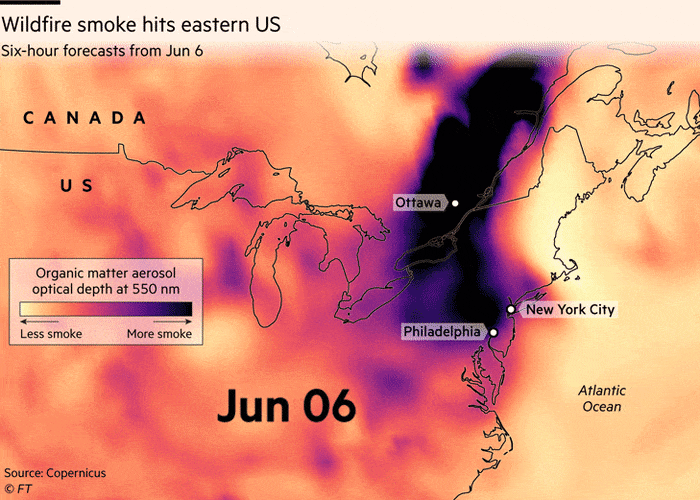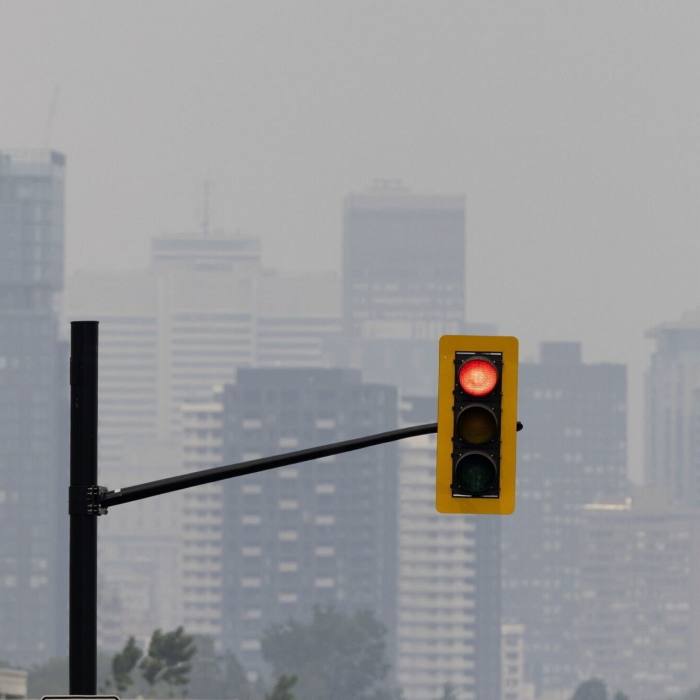Millions of people in the eastern United States and Canada are facing health warnings from environmental regulators as smoke from wildfires in the north spread from Ottawa to New York.
Canada has been battling an active wildfire season for much of the past month, with fires burning across much of its 10 provinces and territories. Smoke from the fires swept south this week into some of North America’s most populous cities.
New York City’s air quality ranks second among major world urban areas on Wednesday IQAir World Quality Indexsecond only to New Delhi in India.
As the Covid-19 emergency subsides, New Yorkers are once again donning their recently abandoned masks. Schools canceled outdoor events and New York City urged vulnerable people to stay indoors and keep windows shut as air quality hit its lowest level since the 1960s.

“Yesterday, New Yorkers saw and smelled the impact like never before,” New York City Mayor Eric Adams said Wednesday morning, noting that the event “shattered the city.”
After relaxing Wednesday morning, New York officials predicted conditions would deteriorate again in the afternoon and evening, calling it a “multi-day event.”
Public schools in Washington also suspended outdoor activities for students as the city’s environmental watchdog issued a “Code Red” air quality alert for the District of Columbia.
Canada’s environmental watchdog has classified air quality in the nation’s capital, Ottawa, as reaching its highest level of health risk. Large swathes of Quebec and Ontario are under air quality alerts from Canadian authorities.

Smoke from wildfires in Canada blankets the Lincoln Memorial in Washington © Leah Mills/Reuters

Smoke from wildfires in Montreal, Quebec © Allen McInnis/Bloomberg
Earlier this spring, fires in Alberta, Canada’s main oil-producing province, forced tens of thousands of people to evacuate their homes and caused more than a dozen oil and gas companies to temporarily shut down or reduce operations.
Now, more fires are burning in forests in eastern provinces like Quebec and Nova Scotia. As of Wednesday, there were more than 400 fires burning across Canada, burning about 4 million hectares so far this year, according to Canadian Interagency Forest Fire Centre.
Scientists have observed an increase in the intensity of fires in boreal forests in the northern hemisphere over the past decade, with average temperatures rising faster in the northern part of the planet than near the equator due to global warming as reflective snow and ice in the northern hemisphere melts in the Arctic.
Wildfires generally become more frequent and intense north of the equator as the planet warms and summers heat up. Globally, May 2023 is listed as the second-warmest May on record, according to the Copernicus EU Observing Service.
Heat records have been broken in parts of Asia, notably in China and Vietnam, where the unusually warm weather started months earlier than the usual summer months of July and August. Parts of Siberia also set records last week.
Sea surface temperatures were the warmest on record for the month and have remained near record levels since March.
climate capital

Where climate change meets business, markets and politics. Explore the FT’s coverage here.
Are you curious about the FT’s commitment to environmental sustainability? Learn more about our science-based goals here


